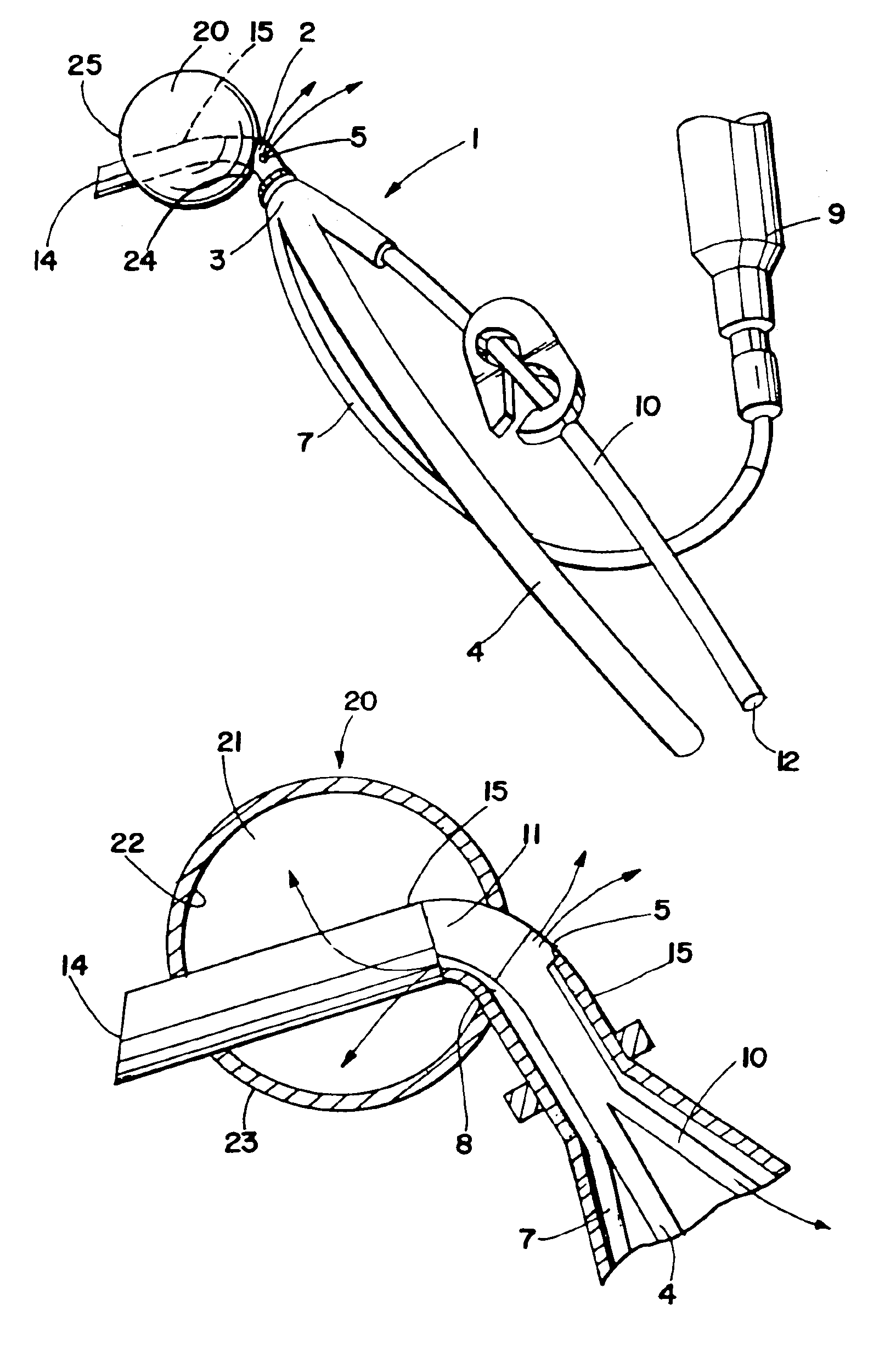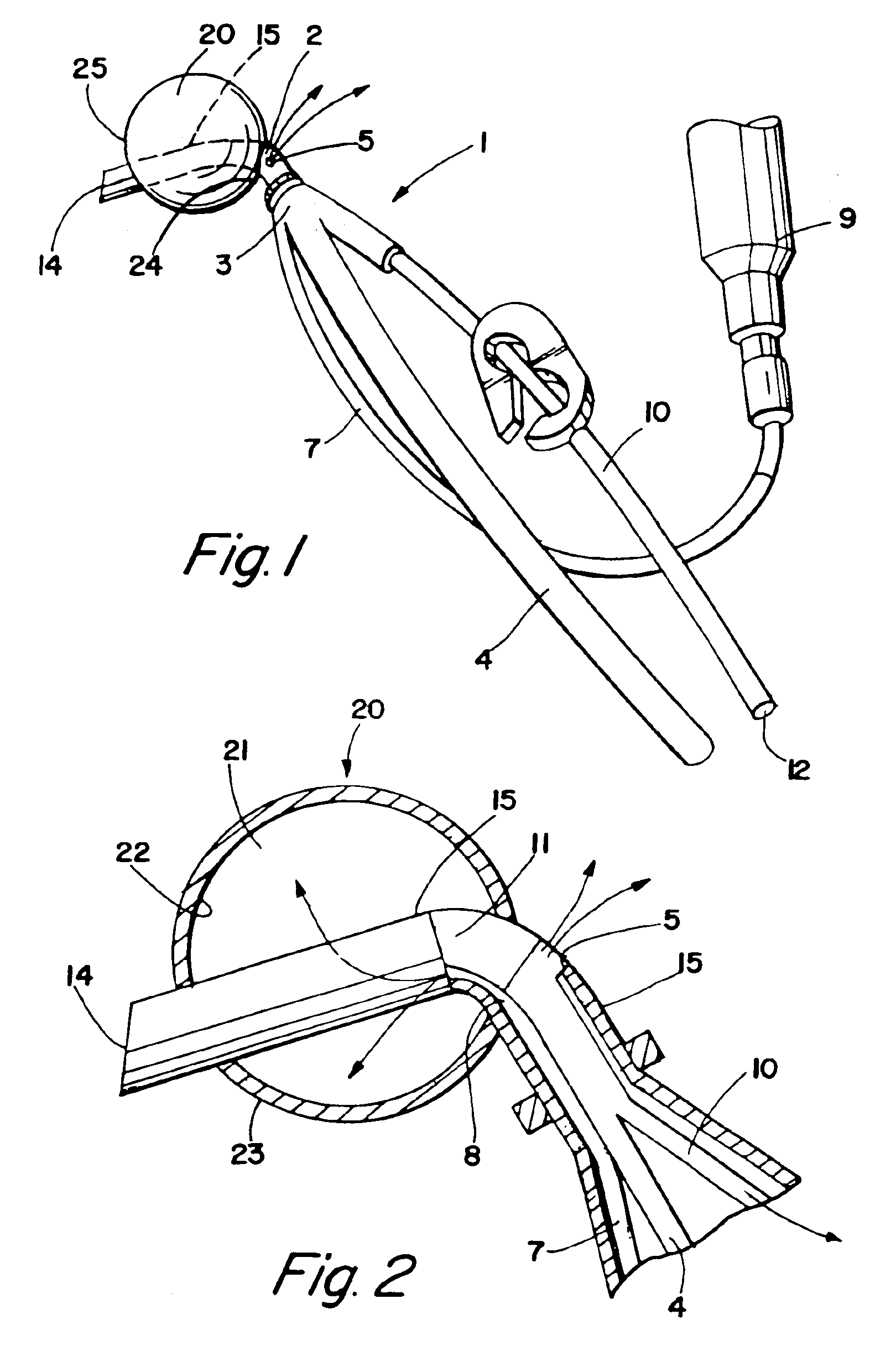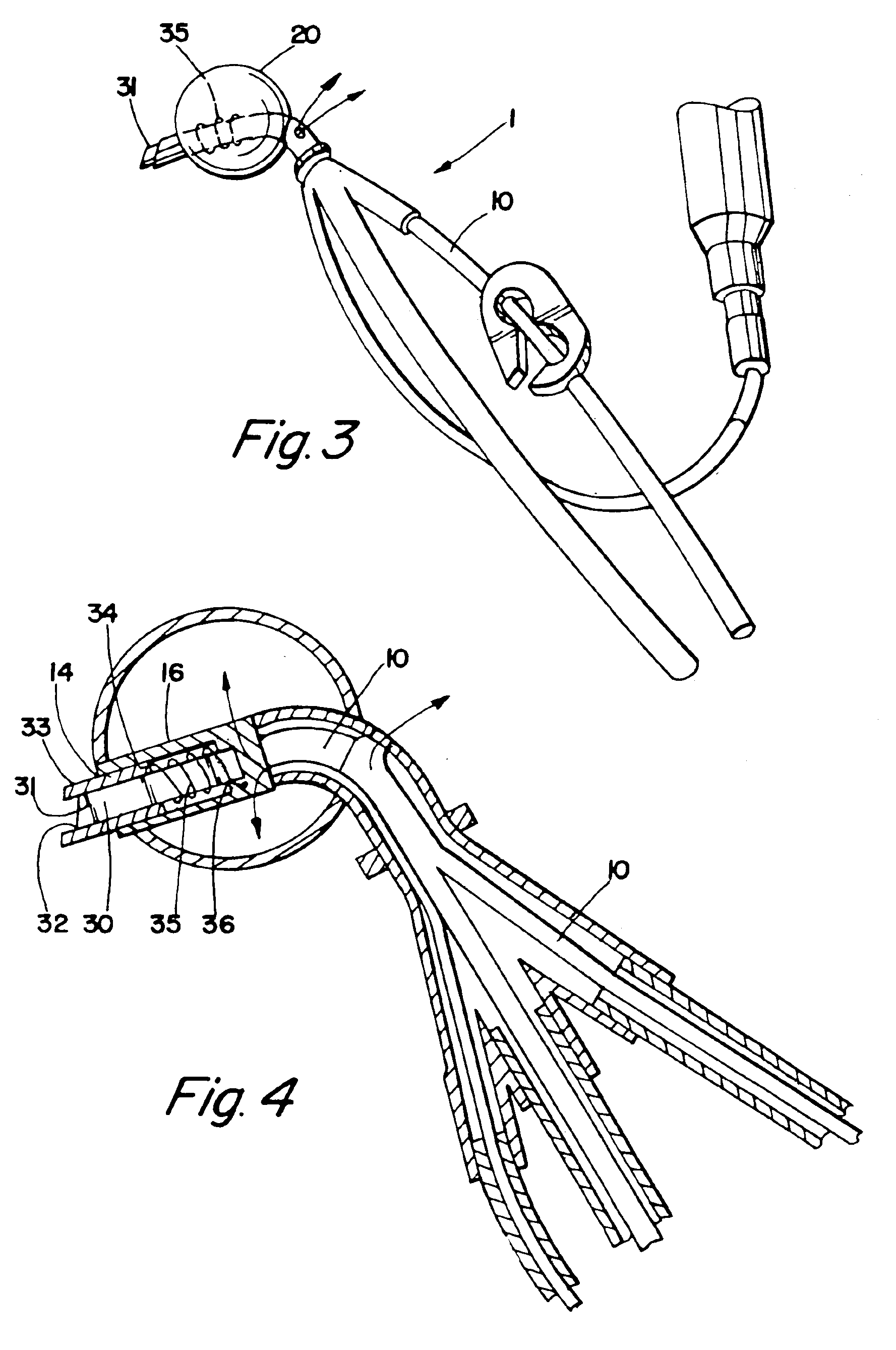Balloon occlusion device and methods of use
a balloon catheter and occlusion device technology, applied in the field of balloon catheter occlusion device and methods of use, can solve the problems of affecting the operation of the balloon catheter, so as to achieve the effect of stabilizing the position of the balloon catheter during expansion
- Summary
- Abstract
- Description
- Claims
- Application Information
AI Technical Summary
Benefits of technology
Problems solved by technology
Method used
Image
Examples
Embodiment Construction
[0081]FIG. 1 depicts an embodiment of a cardioplegia occluder 1 for delivering cardioplegia to the aorta during cardiopulmonary bypass where the distal region 2 of the substantially rigid cannula 3 is curved to facilitate self-centering inside the aorta. The distal end of the cannula 14 is adapted to enter the aorta.
[0082]In this embodiment, a spherical occluder 20 is circumferentially disposed about the outer surface 15 of the distal region of the cannula forming a chamber 21 with an inner surface 22, an outer surface, a proximal end 24 and a distal end. In some embodiments, the occluder is an inflatable balloon. In other embodiments, the balloon is foam-filled, so that the occluder may be inserted in a contracted condition, for instance, within a sleeve or under negative pressure, and when released from the sleeve or the negative pressure, will automatically expand to the predetermined shape. Although FIG. 1 and FIG. 2 depict the occluder as spherical, in other embodiments, it is ...
PUM
 Login to View More
Login to View More Abstract
Description
Claims
Application Information
 Login to View More
Login to View More - R&D
- Intellectual Property
- Life Sciences
- Materials
- Tech Scout
- Unparalleled Data Quality
- Higher Quality Content
- 60% Fewer Hallucinations
Browse by: Latest US Patents, China's latest patents, Technical Efficacy Thesaurus, Application Domain, Technology Topic, Popular Technical Reports.
© 2025 PatSnap. All rights reserved.Legal|Privacy policy|Modern Slavery Act Transparency Statement|Sitemap|About US| Contact US: help@patsnap.com



